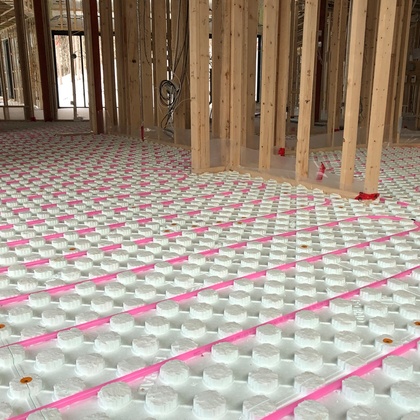What is the best way to renovate a basement after a flood?
Hello, I'm in the midst of a post-flood basement renovation and have been doing some reading on your website only recently. I'm realizing that I may have made some mistakes and would like your advice as to what direction to take in order to minimize future problems.
The basement was partially finished when it flooded after a 100mm Ottawa area rain event in October 2017. The home is located 1 KM east of the Rideau River, probably on infill over swampy land. In any case, the water table is high (12-18 inches below the slab). The cause of the flood was undetermined, but I suspect that a rising water table overwhelmed the 1950's era drainage system of exterior clay weeping tile connected to a running trap that evacuated into the sanitary line. We had 12 cm of water on the floor overnight. The basement was divided into two parts, with one half finished and one unfinished. I removed all the flooring in the finished section, cut and removed the gyprock and insulation three feet off the ground, and disinfected the studs throughout.
We decided to replace the sanitary drains and install a backwater valve. At the same time, we had weeping tile placed next to the new drains. The existing slab was left in place, other then where it was chipped out to access the drains. We then considered our flooring options for the finished half of the basement and decided to have a concrete floor for its resistance to future flooding. We had a company pour a new 2-3 inch slab on top of the existing slab over that half of the basement. The 2x4 stud wall that was placed up against the foundation walls was left in place, but protected with Blueskin tape.
We now have to finish the walls and seal or otherwise treat the concrete floor. I understand now that I should've removed the 2x4 stud wall before pouring the new slab. I also see that it would have been better to remove the entirety of the old slab and install a new properly insulated one. My question is can I proceed in a way that makes sense or do I need to start over? I was thinking of acid staining the floor and then applying a sealant, but I now see that this product is not LEED approved.
Thanks for your time reading and any advice you can offer.























Hi Wren
That is a tough question, and I know what it’s like to look at a project and wish you could go back. While it would be much better if your slab was insulated underneath, I have a hard time recommending you do that now, so that would have to be your call based on budget, and comfort.
As for the stud wall, if I’m reading that right, it sounds like you have the bottom plate of the stud wall embedded in the concrete floor and up against the wall as well. If so, it would be best to remove it if you still can since the concrete will continue to absorb moisture and in turn the wood will continue to absorb moisture as well and begin to rot. I get the idea of the Blueskin to protect the wood from wetting, but it may have the effect of preventing it from drying.
You’ve probably read on our site that the stud wall shouldn’t be right against the foundation wall; if it’s at all possible I would want to get that stud wall separated from the concrete. It isn’t a load bearing wall, its job is to hold insulation and drywall. So if you’re able to, maybe cut the studs at the bottom and pry it out, then separate the stud wall from the concrete by an inch or two (if you can spare the space inside) and spray foam behind it and even under it.
As for sealing the floor, I would recommend a silicate densifier. It would make for a very durable and completely non-toxic floor, you can read more about it here.
It can be tough to offer advice without a visual, so feel free to load some photos and we can trouble shoot this and come up with a solution.
Also bearing in mind that prevention is better than cure - check out our guide on preventing basements from flooding by maintaining exterior drains, fitting sump pumps, high water alarms and battery backups to sump pumps.
And if you need to renovate a hardwood floor, this is a good guide:
Refinishing hardwood floors - the definitive DIY guide